Resources - Types of salt
Table of Contents:
- Black Salt
- Celtic Salt
- Coarse Salt
- Flake Salt
- Fleur De Sel
- French Sea Salt
- Grey Salt
- Grinder Salt
- Hawaiian Sea Salt
- Italian Sea Salt
- Kosher Salt
- Organic Salt
- Sea Salt
- Smoked Sea Salt
- Table Salt
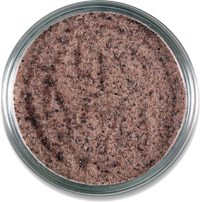
Black Salt
Other Names: Kala Namak, Sanchal
Black salt is an unrefined mineral salt. It is actually a pearly pinkish gray rather than black, and has a strong, sulfuric flavor. Uses: Use in authentic Indian cooking. Available in very fine or coarse grain.
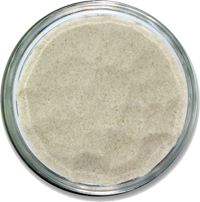
Celtic Salt
Other Names: French Grey Sea Salt
Celtic salt refers to naturally moist salts harvested from the pristine Atlantic seawater off the coast of Brittany, France. These salts, which are rich in trace mineral content, are hand harvested using the Celtic method of wooden rakes allowing no metal to touch the salt. Celtic salts are available in coarse, stone ground fine and extra fine grain.
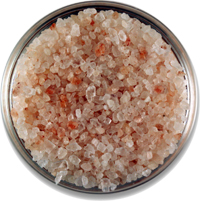
Coarse Salt
Other Names: Gos Sel, Sale Grosso
Coarse salt is a larger grained sea salt crystal. Most recipes calling for salt intend using finely ground salt, however, many professional chefs prefer cooking with coarse salt because they can easily measure it with their fingers. It is less moisture sensitive so it resists caking and is easily stored. Uses: Salt crusts on meat or fish, and flavoring for soups, stews and pasta.
Finishing Salts
Premier salts that are grown in special areas around world and are known for their unique textures which allow them to quickly dissolve when applied to food at presentation. These salts bring out the depth of natural flavors of any dish. See Flake Salt, Fleur De Sel, French Sea Salt below.
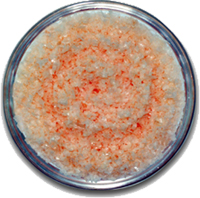
Flake Salt
Other Names: Flaky Salt
Flake sea salt is a light crystal reminiscent of snowflakes. Seawaters are evaporated using the natural processes of sun and wind producing salt brine that is fed into an open evaporating pan. The brine is then slowly heated to the point where delicate pyramids shaped crystals of salt appear. The finished product is light, flaky sea salt.
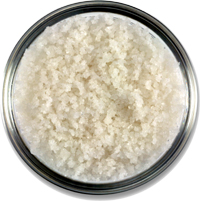
Fleur de Sel
Other Names: Flower of Salt, Flor De Sal (Portuguese)
Fleur de Sel (flower of salt) is the premier condiment salt. This artisan sea salt is comprised of "young" crystals that form naturally on the surface of salt evaporation ponds. They are hand harvested under specific weather conditions by traditional "Paludiers" (salt farmers). True Fleur de Sel comes from the Gu�rande region of France. Like fine wine regions, different areas within Gu�rande produce salts with their own unique flavors and aroma profiles. Uses: Ideal for salads, cooked fresh vegetables and grilled meats.
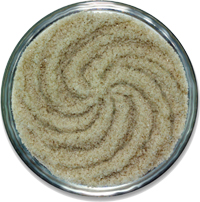
French Sea Salt
French sea salts are harvested from pristine Atlantic seawater. Unlike most American Sea salts, they are usually unrefined, so they retain more of the trace minerals that naturally occur in seawater. These minerals include natural iodine. Uses: Ideal for salads, cooked fresh vegetables and grilled meat. They are available in coarse, stone ground fine and extra fine grain.
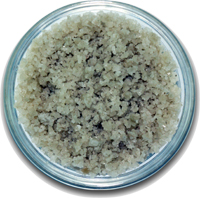
Grey Salt
Other Names: Sel Gris, Celtic Sea Salt
Grey Salt is a �moist� unrefined sea salt usually found on the coastal areas of France. Its light grey, almost light purple color comes from the clay found in the salt flats. The salt is collected by hand using traditional Celtic methods. Grey Salt has gained great fame in the mainstream culinary world in the last few years and is considered by many to be the best quality salt available. It is available in coarse, stone ground fine and extra fine grain.
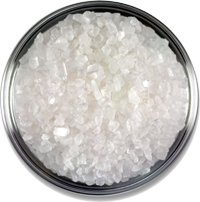
Grinder Salt
Grinder salts are typically large dry crystals suitable to a salt mill or grinder. The white salt crystals are easy to grind in the mills and the lower moisture content allows the salt to flow through with little hassle. Uses: For flavoring foods at the table when the host determines that a finer, higher grade finishing salt is not required. Note: Always use a salt mill with a ceramic or plastic grinding mechanism. Metal, including stainless steel, will corrode and adversely flavor the salt.
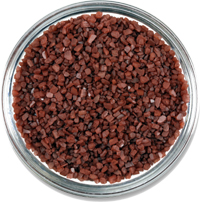
Hawaiian Sea Salt
Other Names: Alaea, Alae, Hawaiian Red Salt
Alaea Sea Salt is a traditional Hawaiian table salt used to season and preserve. A natural mineral called "Alaea" (volcanic baked red clay) is added to enrich the salt with iron oxide. This natural additive is what gives the salt its distinctive pink color. The clay imparts a subtle flavor that is said to be mellower than regular sea salt. Uses: It is the traditional and authentic seasoning for native Hawaiian dishes such as Kalua Pig, Poke and Hawaiian Jerky. Also good on prime rib and pork loin. Hawaiian Sea Salt comes in fine and coarse grain.
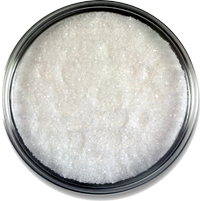
Italian Sea Salt
Other Names: Sicilian Sea Salt, Sale Marino
Italian sea salt is produced from the low waters of the Mediterranean Sea along the coast of Sicily. It is a natural salt rich in minerals such as iodine, fluorine, magnesium and potassium with a much lower percentage of sodium chloride than regular table salt. The salt pans are filled with the seawater in the spring and left to evaporate relying on the heat of the Sicilian sun and strong African winds. Harvesting takes place once the water has evaporated and it is crushed and ground without further refining. These salts have a delicate taste and plenty of flavor without being too strong or salty. Uses: Highlight salads, finish roasts and sauces. Great as a garnish on bruschetta. Available in coarse and fine grain.
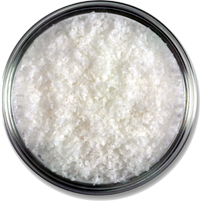
Kosher Salt
Kosher salt is regular salt that is so named for its use in the preparation of meat according to the requirements of Jewish dietary guidelines. It contains fewer additives, and has a more salty taste than ordinary table salt. It generally comes in flakes rather than granules. The flakes dissolve easily, and have a less pungent flavor than table salt. Due to the shape of the granules, there is simply less salt in a pinch of kosher salt than in a pinch of table salt. This is the kind of salt most often used on top of pretzels and on the rims of margarita glasses. It is important to note that all Kosher salt is not necessarily sea salt. Kosher salt comes in fine and coarse grain.
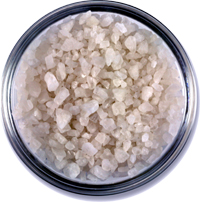
Organic Salt
Although salt is not certified organic by the same standards as botanicals, agriculture or livestock, there are at least three organizations that have set up rigorous guidelines for the production of salt. This includes ensuring the purity of the water, cleanliness of the salt beds and strict procedures on how the salt is harvested and packaged. These certifications include:
Nature & Progres - France
Bio-Gro - New Zealand
Soil Association Certified - Wales
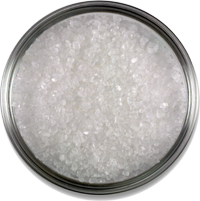
Sea Salt
Other Names: Sal Del Mar, Sel De Mer, Sale Marino
Sea salt is a broad term that generally refers to unrefined salt derived directly from a living ocean or sea. It is harvested through channeling ocean water into large clay trays and allowing the sun and wind to evaporate it naturally. Manufacturers of sea salt typically do not refine sea salt as much as other kinds of salt, so it still contains traces of other minerals, including iron, magnesium, calcium, potassium, manganese, zinc and iodine. Proponents of sea salt rave about its bright, pure, clean flavor, and about the subtleties lent to it by these other trace minerals. Some of the most common sources for sea salt include the Mediterranean Sea, the North Sea, and the Atlantic Ocean (particularly in France, on the coast of Brittany). Sea salt is thought to be healthier and more flavorful that traditional table salt. Available in coarse, fine & extra fine grain size.
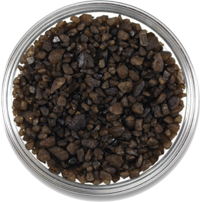
Smoked Sea Salt
Smoked Sea Salts are a relatively new and exciting gourmet salt in the US! They are naturally smoked over real wood fires to infuse the salt crystals with 100% natural smoke flavor. Smoked Sea Salts add a unique flavor to a wide range of dishes including roasts, chicken, salads and sandwiches. Unlike artificially infused smoke flavored salts all of our smoked sea salts are naturally smoked. Uses: Great when grilling or oven roasting. This is a must when cooking Salmon. Also adds an authentic smoke house flavor to soups, salads, pasta and sandwiches. Available in coarse grain size.
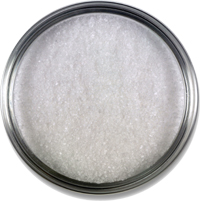
Table Salt
Table salt is the most common kind of salt found in the average kitchen. It usually comes from salt mines and once it's mined, it is refined and most minerals are removed from it until it is pure sodium chloride. Most table salt is available either plain or iodized. American salt manufacturers began iodizing salt in the 1920's, in cooperation with the government, after people in some parts of the country were found to be suffering from goiter, an enlargement of the thyroid gland caused by an easily-preventable iodine deficiency. People require less than 225 micrograms of iodine a day. Seafood as well as sea salt contains iodine naturally and the supplement is unnecessary if there are sufficient quantities of either in one's diet. Note: Natural sea salt is a healthy replacement for ordinary table salt.